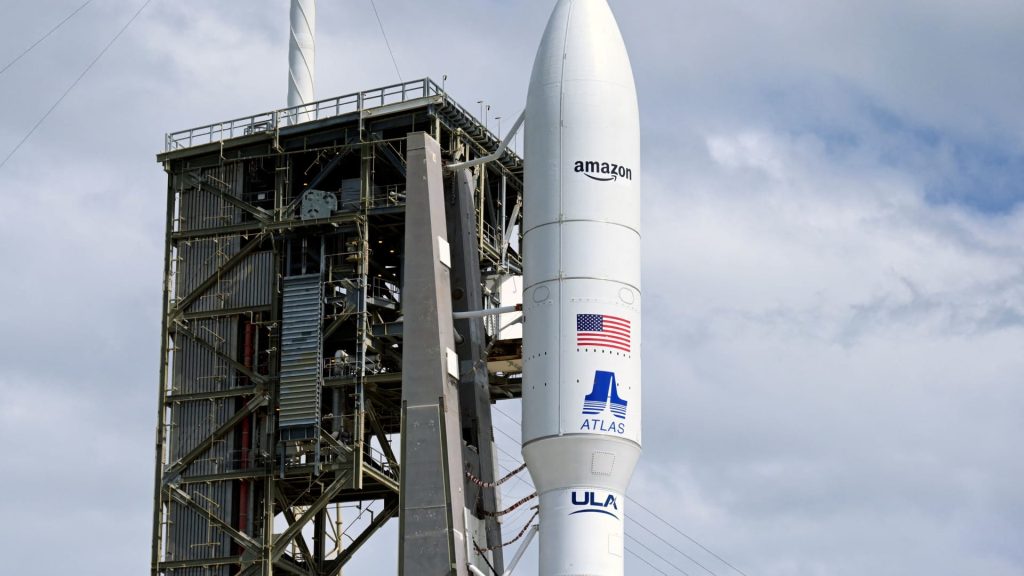A United Launch Alliance Atlas V rocket is on the launch pad carrying Amazon’s Project Kuiper internet network satellites, which are expected to eventually rival Elon Musk’s Starlink system, at the Cape Canaveral Space Force Station in Cape Canaveral, Florida, U.S., April 9, 2025.
Steve Nesius | Reuters
Amazon on Monday launched the first batch of its Kuiper internet satellites into space after an earlier attempt was scrubbed due to inclement weather.
A United Launch Alliance rocket carrying 27 Kuiper satellites lifted off from a launchpad at the Cape Canaveral Space Force Station in Florida shortly after 7 p.m. eastern, according to a livestream.
“We had a nice smooth countdown, beautiful weather, beautiful liftoff, and Atlas V is on its way to orbit to take those 27 Kuiper satellites, put them on their way and really start this new era in internet connectivity,” Caleb Weiss, a systems engineer at ULA, said on the livestream following the launch.
The satellites are expected to separate from the rocket roughly 280 miles above Earth’s surface, at which point Amazon will look to confirm the satellites can independently maneuver and communicate with its employees on the ground.
Six years ago Amazon unveiled its plans to build a constellation of internet-beaming satellites in low Earth orbit, called Project Kuiper. The service will compete directly with Elon Musk’s Starlink, which currently dominates the market and has 8,000 satellites in orbit.
The first Kuiper mission kicks off what will need to become a steady cadence of launches in order for Amazon to meet a deadline set by the Federal Communications Commission. The agency expects the company to have half of its total constellation, or 1,618 satellites, up in the air by July 2026.
Amazon has booked more than 80 launches to deploy dozens of satellites at a time. In addition to ULA, its launch partners include Musk’s SpaceX (parent company of Starlink), European company Arianespace and Jeff Bezos’ space exploration startup Blue Origin.
Amazon is spending as much as $10 billion to build the Kuiper network. It hopes to begin commercial service for consumers, enterprises and government later this year.
In his shareholder letter earlier this month, Amazon CEO Andy Jassy said Kuiper will require upfront investment at first, but eventually the company expects it to be “a meaningful operating income and ROIC business for us.” ROIC stands for return on invested capital.
Investors will be listening for any commentary around further capex spend on Kuiper when Amazon reports first-quarter earnings after the bell on Thursday.
WATCH: Amazon launches Project Kuiper prototypes



